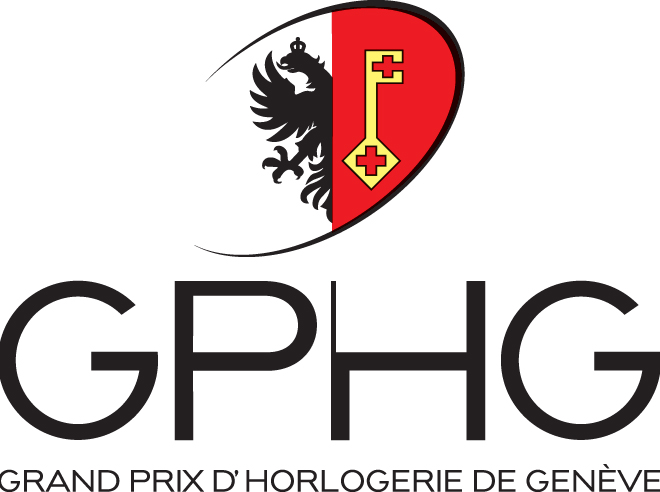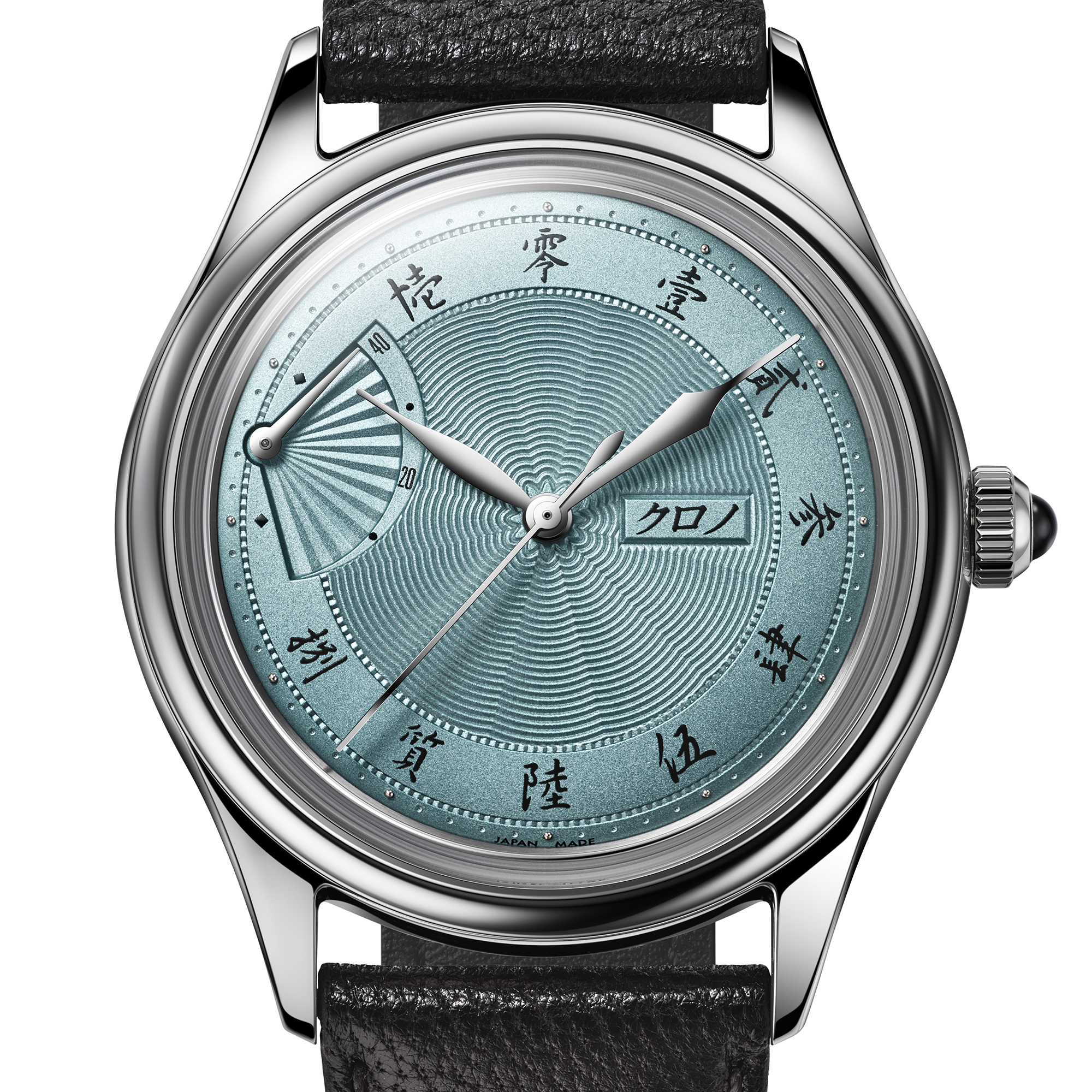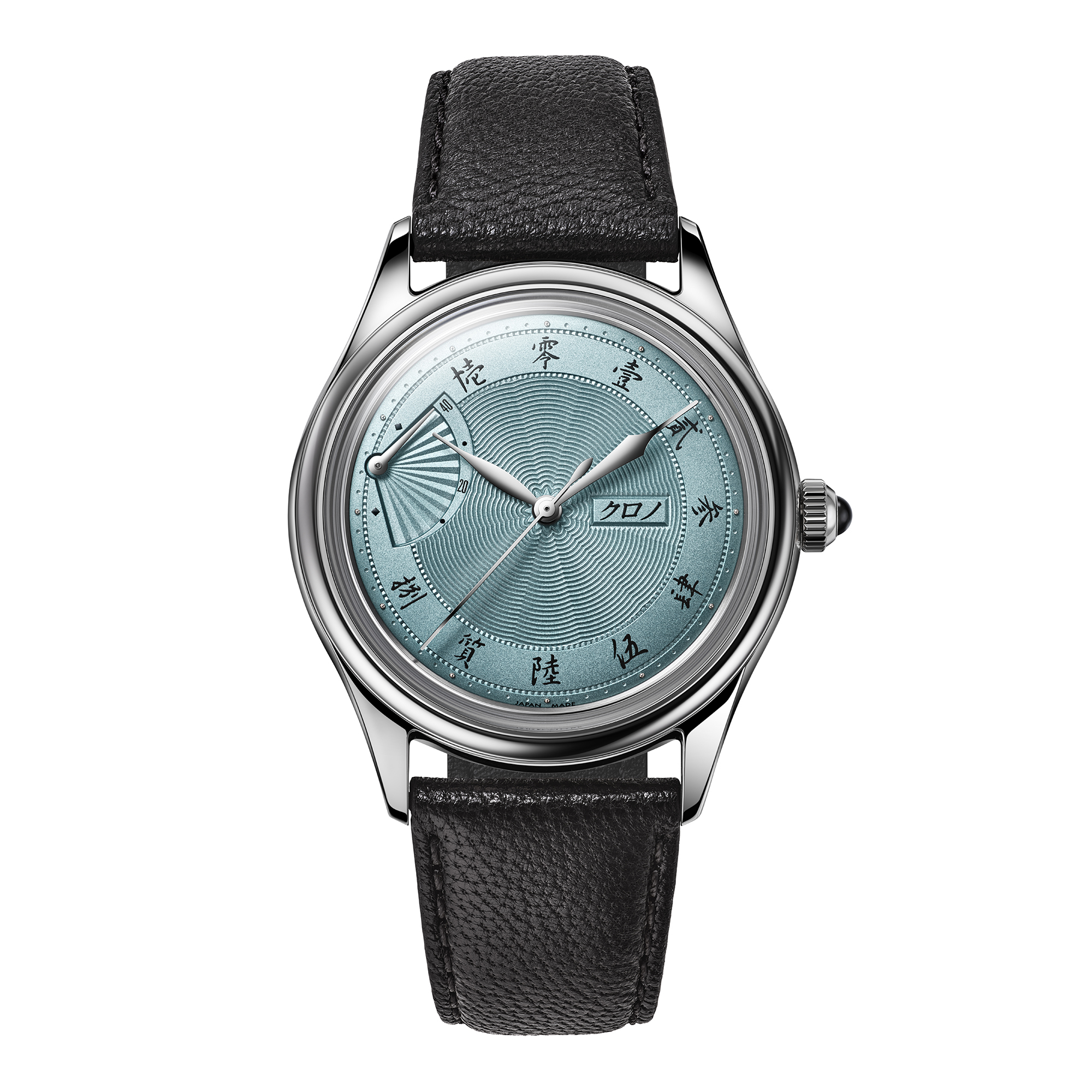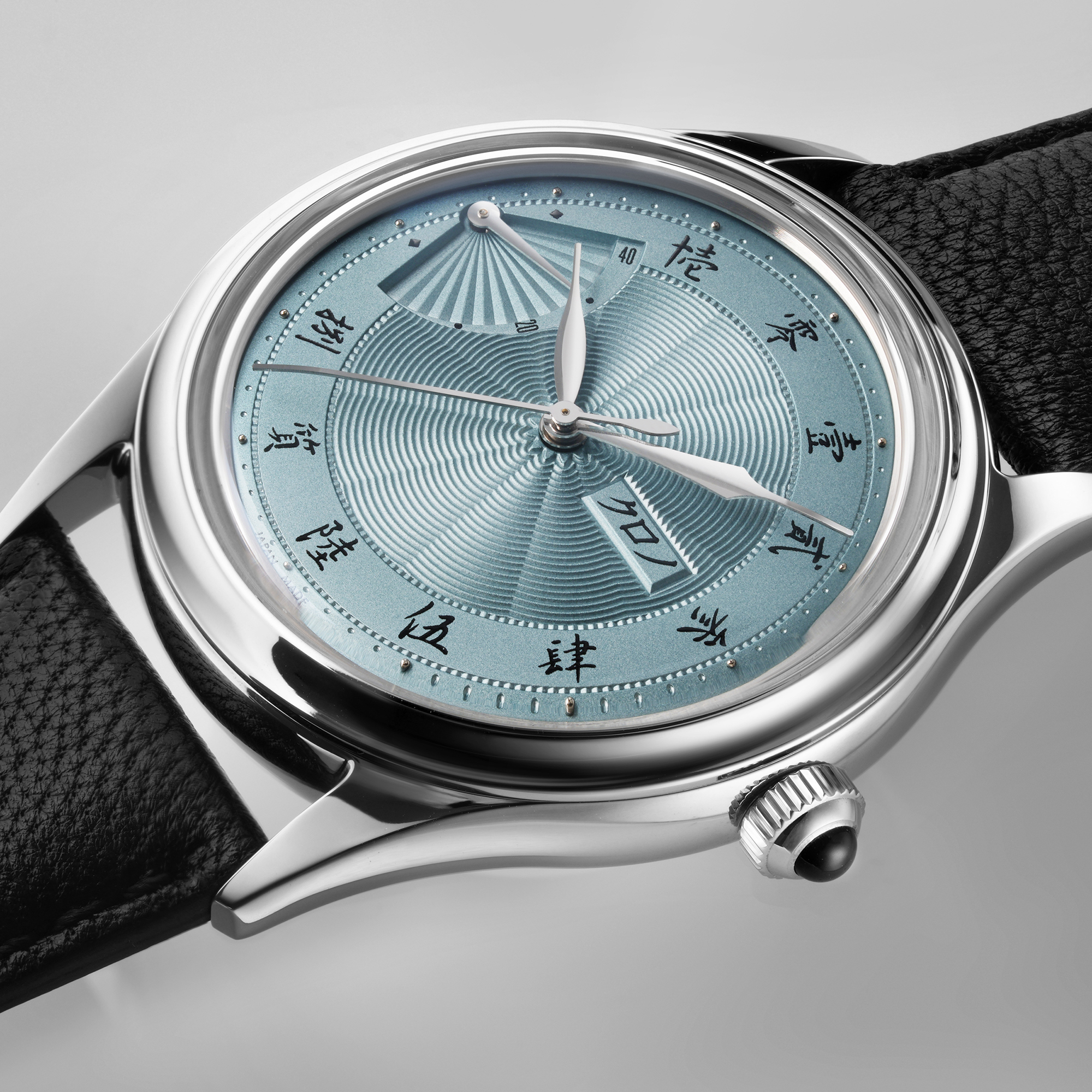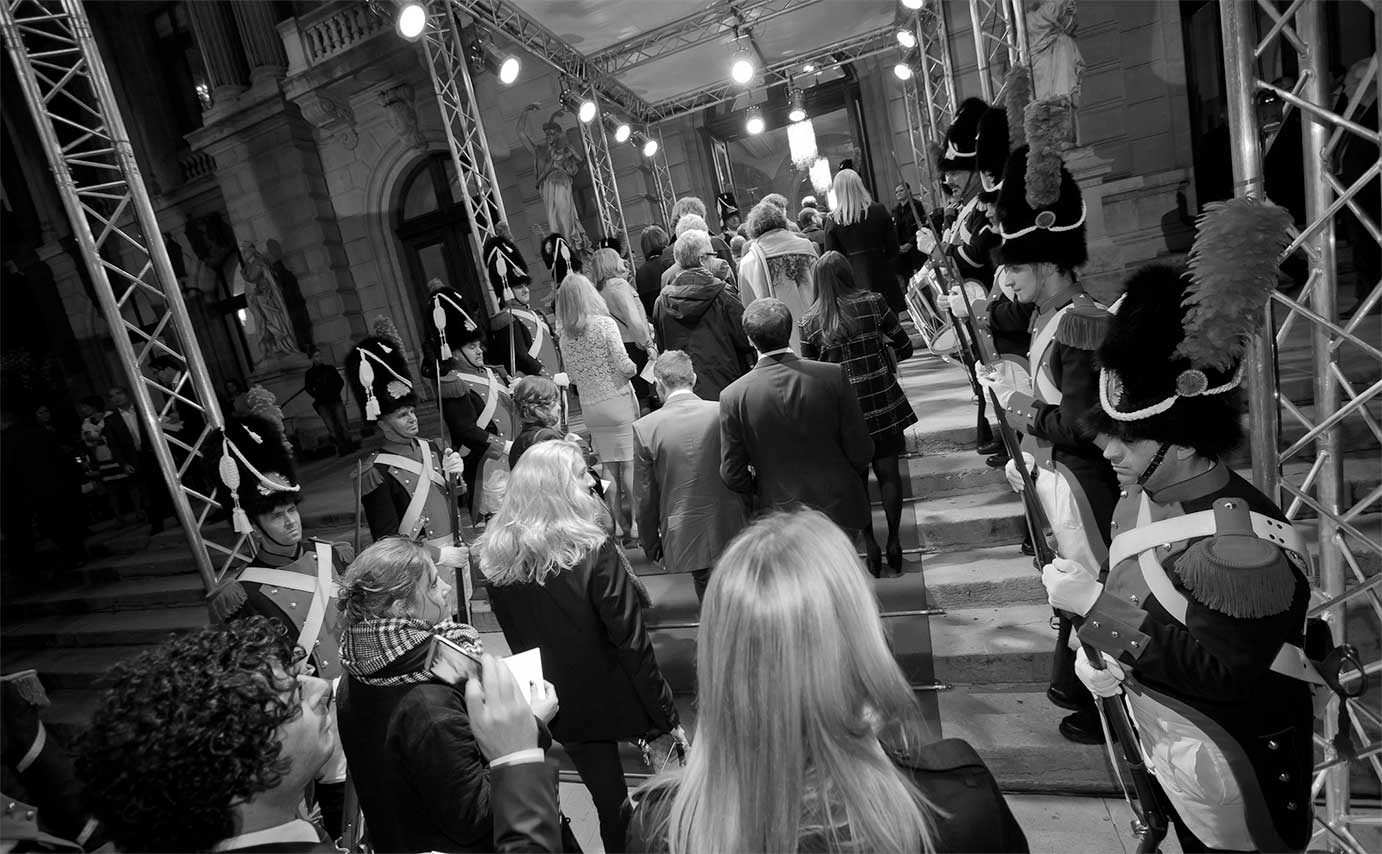
Jubilee Sensu EOL 'Shiraai'
Power reserve: 40 h, 28800 vph
Hajime Asaoka brings back his highly successful Réserve de Marche ‘Sensu NOS’ - which sold out in minutes - in a bright metallic baby blue colorway formally named '白藍' (Shiraai). This is the first time since the 2021 Seiji that such a similar colorway has been used. Its vibrancy is further accentuated on a silver-plated guilloché dial giving unparalleled lightplay. A chrysanthemum-like wave guilloché pattern radiates outward from the center of the dial, and is complemented by the iconic 'Sensu' (Japanese folding fan) guilloché at the power-reserve indicator. At the periphery, railway-track guilloché is complemented by high polished steel domes at each hourly mark. Unique Kanji script in black is painted at each hour marker to complete this unique dial.
The new Jubilee Sensu EOL '白藍' leverages a discontinued cal.9133 movement that is end-of-life, and no longer made. Only a limited number of these EOL movements have been made available to Kurono, and we do not have access to more. Additionally, so as to achieve dial purity, modifications were made by Hajime Asaoka to remove the calendar window and its geartrain, making this finite movement even more unique.
To mark his 60th Diamond Jubilee, a precious black onyx cabochon adorns the watch's crown for the very first time. This new feature marks the rarity and limited nature of this year’s releases for the occasion of Hajime Asaoka’s 60th.
Japan has a long-standing tradition of indigo dyeing, known as 'Aizome'. Depending on the depth of color, various names are used to describe the different shades of indigo. Among them, the lightest shade is called 白藍 'Shiraai' (literally "white indigo"). The dial of this watch is inspired by that 白藍 'Shiraai' hue."
“What makes indigo dyeing unique is how the tone of the color changes with its intensity. When lightly
dyed, it takes on a slightly greenish tint, and as it becomes deeper, it gradually shifts toward a purplish hue. However, since the watch dial is made of metal, traditional indigo dyeing is not practical. Instead, I provided a piece of fabric dyed in actual shiraai as a color sample for the dial manufacturer, and a soft lacquer finish was applied using pigments, with Prussian blue serving as a substitute.”
“Using Prussian blue as a stand-in for traditional indigo is, in fact, a historically rooted practice in Japan like in ukiyo-e prints by Katsushika Hokusai, with the color subsequently dubbed as 'Hokusai Blue'. Prussian Blue was particularly effective for producing delicate, pale blue tones. In that sense, the blue on this dial can also be described as 'Hokusai Blue'." ~ Hajime Asaoka
